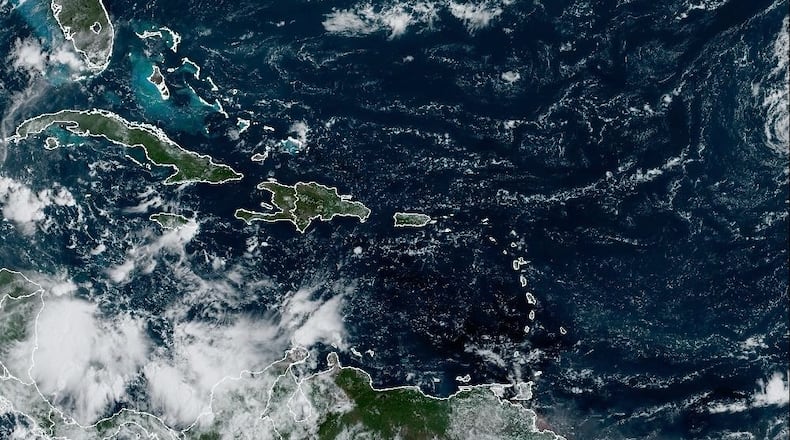With huge portions of Georgia, Florida, the Carolinas and Tennessee still sorting through the devastation Hurricane Helene left behind last week, the National Hurricane Center is already tracking new disturbances in the Atlantic Ocean and Caribbean Sea that could grow into tropical storms.
The first area of interest is in the southwestern Caribbean off the coast of Costa Rica and Nicaragua, where the NHC says a trough of low pressure is producing disorganized showers and thunderstorms.
The NHC gives the system, which does not have a name yet, only a 40% chance of growing into a tropical storm over the next seven days, but notes that as it moves north over the Caribbean and into the Gulf of Mexico, it could encounter conditions that are “conducive for gradual development.”
Pam Knox, an agricultural climatologist at the University of Georgia, said she wouldn’t be surprised if the system eventually grows into a depression, tropical storm or even a hurricane, but said it’s far too early to determine where it will head or how strong it will be.
“It seems likely we’ll see something develop, but whether or not that has any impact on Georgia is a huge question mark,” Knox said.
Even if it does not become a hurricane, Knox said it’s worth keeping an eye on. In mid-September before Helene struck, a storm system that was not quite strong enough to earn a name still dumped 15 inches or more of rain on parts of coastal North and South Carolina.
There’s plenty of other activity happening in the Atlantic Ocean, but it’s too early to say whether those systems will threaten land.
Churning hundreds of miles west of the Cabo Verde Islands, off the coast of Senegal in western Africa, Tropical Storm Kirk became the 11th-named storm of the 2024 hurricane season with sustained winds of 50 mph. The storm is expected to strengthen into a major hurricane but for now, the NHC’s forecast shows it curving away from the U.S. East Coast.
Behind Kirk, there’s another tropical wave that recently spun off the west coast of Africa.
The NHC says the wave will encounter conditions favorable for strengthening and says there’s a 90% chance it will develop into a tropical system within the next seven days as it moves east across the Atlantic. But from there, it’s still too soon to say where it will head.
Before the current hurricane season began, the National Oceanic and Atmospheric Administration predicted the Atlantic Basin would produce between 17 and 25 named storms this year, the most the agency had ever forecast.
After an active start to the season, there was an eerie lull that spanned almost all of August, leading some to question whether the prediction would prove accurate. But after Helene and the recent flurry of other storms, Knox said that with two months still to go in hurricane season, it appears the Atlantic Basin has roared back to life.
“This season seems to be looking like it’s more back-loaded, with a lot of the activity occurring now,” Knox said.
About the Author
Keep Reading
The Latest
Featured




